It was an Owl Tour today, the first of 2018. The weather was dry and the wind had dropped completely today, which was a real bonus, but it was still very dull, grey and chilly all day with a light mist which thickened in the afternoon.
After we met up on the coast this morning, we headed straight over to the grazing marshes to look for Barn Owls. One had been out hunting just before we arrived, but after a mild, dry night they can go to bed very early at this time of year. Thankfully, as soon as we got up onto the seawall, we could see a Barn Owl still hunting out over the grass in the distance.
We walked up along the bank and watched it for a while, flying round methodically over the same field. The Barn Owl dropped down onto the ground a couple of times but came up without anything shortly after. It disappeared round behind some reeds for a while, but then came back out and continued to hunt over the same area.

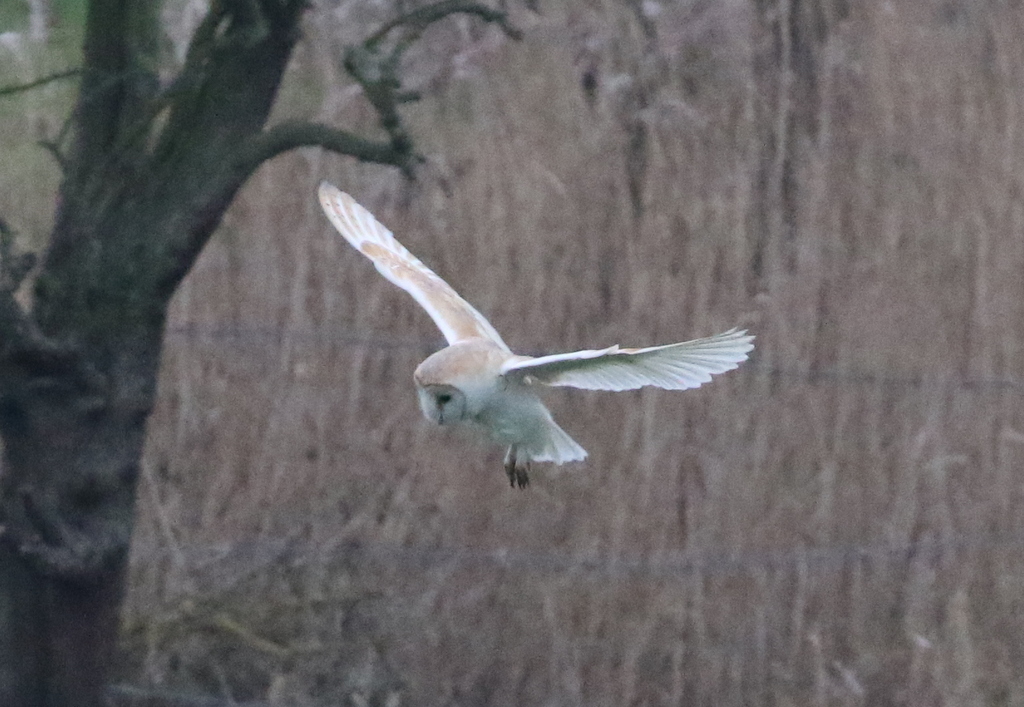
The Barn Owl gradually worked its way back away from us, working the fields further off along the bank, so we turned our attention to whatever else we could see. Several Marsh Harriers were quartering the reeds and the grazing marshes. A Kestrel flew in and landed on a bush before making its way over to perch on one of the information boards out on the seawall.
A big flock of Brent Geese flew up periodically in the distance out across the marshes, circling round calling, before dropping back down to feed on the grass. Several Pink-footed Geese flushed off the grazing marshes too, but they headed off inland, presumably to find some recently harvested sugar beet fields to feed it. We could hear their high-pitched yelping calls as they flew off.
The next thing we knew, the Barn Owl was back again, presumably the same one, much closer to us. It dropped down behind a line of reeds, so we made our way over towards it, and when it came up again we had a close flypast. Great views! It came straight past us, flying purposefully now, up and over the bank behind us, and disappeared off inland, presumably heading off to roost.


No sooner had that Barn Owl disappeared, than another turned up. This one was much paler, white winged, the resident male here. It circled round in front of the reeds, perching down in the grass for a few seconds where we managed to get it in the scope. Then it flew back over the reeds and disappeared off towards the trees. Presumably it too was heading in to roost now.
We were just turning to leave when a pair of Grey Partridges flew across and landed down on the grass in front of us. The male stood bolt upright, looking round, while the female picked around in the grass nearby. Then they were off again, running away across the open grass.
Our next target was Little Owl. They can often be found during the morning, perched up enjoying the sun at this time of year, but there was a distinct lack of any sun today! There was a distinct chill in the air too, despite the lack of wind. There was no sign of any Little Owls at our first stop. We stopped again a little further on and walked round to check out the back of some barns. We could just see the top of the head of one Little Owl from here, tucked tight down in the roof, but we couldn’t make out any detail. Not a stunning view!
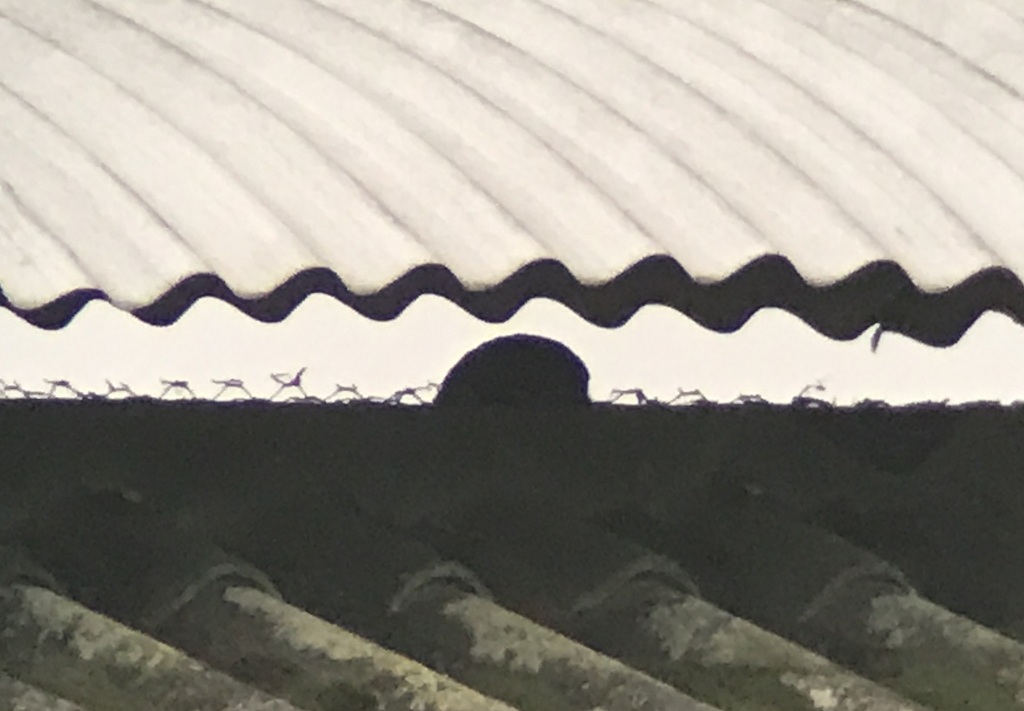
We walked round to the other side of the barn, to see if we could get a better look at the Little Owl from there, but it had found a spot where it was sheltered, out of the wind, and it wasn’t visible at all from this side.
There were some other birds here. A big flock of Curlew flew up from a rape field next to the road as we stopped. A couple of Red-legged Partridges and a pair of Stock Doves were lurking around the farm buildings. A flock of Brent Geese flew up from the coast and headed off inland to feed on a winter wheat field somewhere. Given the weather, it seemed unlikely a Little Owl would come out into the open this morning, so we decided to head off and try our luck elsewhere.
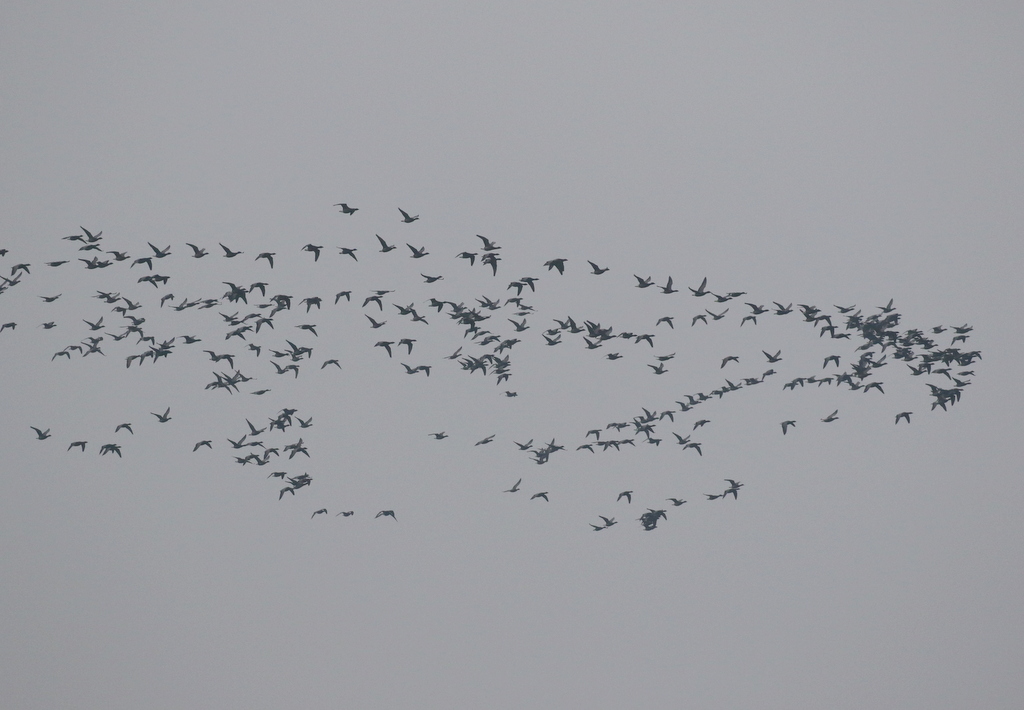
As we made our way west, we saw several Bullfinches which flew out of the hedges as we passed, flashing their white rumps. A couple of Red Kites flew over, and a Common Buzzard perched on the top of the hedge took off as we pulled up alongside it. A Sparrowhawk flew low and fast along the grass verge ahead of us, up into a tree where it landed on a branch briefly, before flying on along the road as we approached. We drove round via several other sites for Little Owl, but there was no sign of any this morning, it seemed like perhaps it was just too dull and cold.
We decided to give up on Little Owls for now, so we continued our way west over to Snettisham. There had been a Shorelark seen here yesterday so, while the rest of the group stopped for a warming coffee, the intrepid leader headed out to look for it. It didn’t take long to find it, picking at the vegetation washed up along the high tide line.
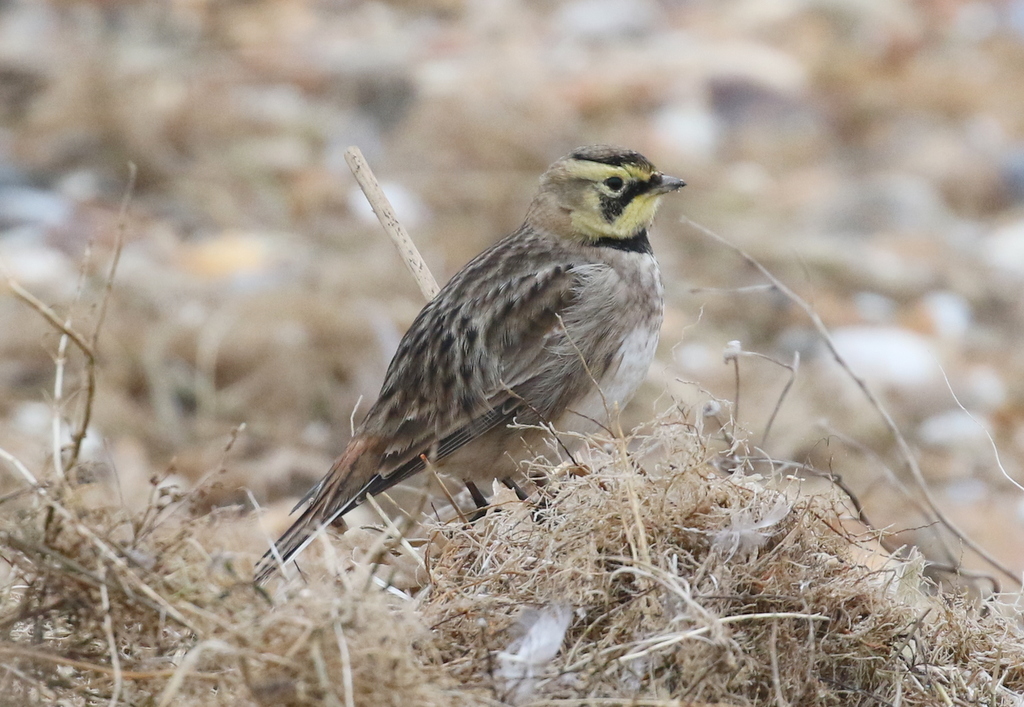 Shorelark – feeding along the tide line at Snettisham
Shorelark – feeding along the tide line at Snettisham
Collecting everyone else after their coffee break, we walked back and had great views of the Shorelark in the scopes. We could see its bright yellow face and black mask and collar, but despite this it was very well camouflaged when feeding unobtrusively, creeping around in the dry brown vegetation.
After watching the Shorelark for a while, we turned our attention to the Wash. It was about high tide now, but it was not a big enough tide to cover the mud today. Still there were lots of waders out there. A long line of Oystercatchers had gathered towards the water’s edge, several thousand strong. A dark smear across the grey mud closer to us was actually a big flock of Golden Plover, roosting over high tide.
There were also lots of Bar-tailed Godwits, Grey Plover, Dunlin and Redshanks scattered liberally over mud, still busy feeding, which we had a look at through the scope. Several Curlews were sleeping further back. The Knot had all gone to sleep out in the middle too, in several smaller groups.

While we were gathered watching the waders, a Spanish couple visiting here walked over to speak to us. They had found an injured Pink-footed Goose – it looked like it had most likely been shot and winged and was unable to fly or stand. They were headed back in the direction of King’s Lynn, so we agreed the best option would be to take it to the RSPCA Wildlife Centre East Winch, which would be not far out of their way.
We made our way round to look at the pits. There are lots of Goldeneye here at the moment, and several of the drakes were displaying, throwing their heads back in an exaggerrated fashion. There was also a nice selection of other ducks – Wigeon, Gadwall, Teal, Mallard, Shoveler and a few Tufted Ducks. There were plenty of noisy Greylag Geese too and a few Little Grebes diving out on the water.

A Kingfisher flew past us, along the edge of the water. It disappeared from view, but by walking down onto the causeway and looking back we could see it perched on a bramble bush along the bank. It was easier to see in the scope – surprisingly well camouflaged for an electric blue bird!
Looking across to the other bank, we could see a shape tucked down under a bramble bush. It was a roosting Short-eared Owl. They often like to roost well hidden from view, but this one was not particularly well concealed by the brambles above it.

There have been Fieldfares on the move in recent days and today was no exception. As we stood scanning the pits, a good-sized flock of about 150 Fieldfares flew south, followed by another 20 or so a little later, calling.
After lunch back at the car, we started to make our way back east. Again, we looked at several sites for Little Owls on the way, but it seemed like we would be out of luck again. It was even greyer know than it had been earlier. Driving past a set of barns where we know there are owls, we looked across to see a shape perched on the top of a roof. We pulled to a stop in front and looked up. There was a Little Owl, perched high on the ridge. It stared at us for a few seconds then, just as the camera came out, it flew off round the back of the buildings.
We made our way back to Blakeney. The mist had thickened and it was very dull now. As we walked out on the seawall, we could see a Barn Owl hunting across the other side. We stopped to scan the marshes and could see a couple of Marsh Harriers out over the reeds, presumably getting ready to go to roost. A pale-headed female perched on the top of a bush and a male did a nice circuit round in front of us.
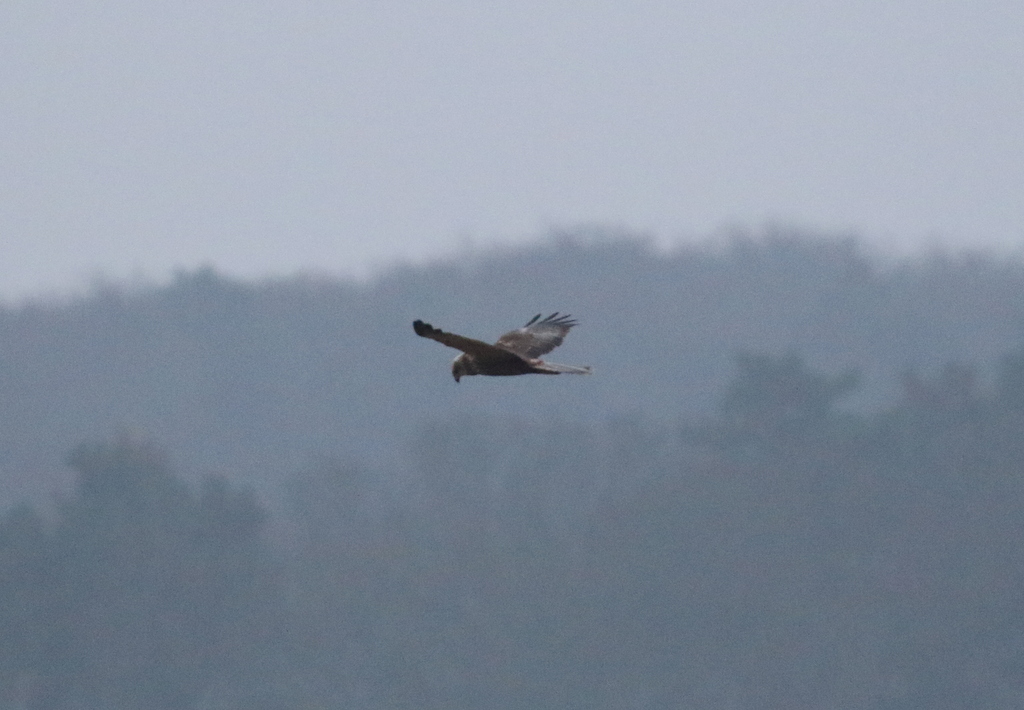
We heard the pinging calls of Bearded Tits coming from the reeds in front of us and we could see the feathery seedheads swaying, despite the lack of any wind. Looking closely, we could see the Bearded Tits clambering through the reeds and feeding on the seeds. A Cetti’s Warbler called from the reeds too.
It didn’t look like the Barn Owl was going to do a circuit round to us today – there was no sign of it coming over to this side of the marshes. So, with the light fading, we headed back to the car and made our way inland again. We parked and walked down to a meadow. There is often a Barn Owl here, but not today – perhaps it had not yet emerged from its roost. A Water Rail squealed nearby.
As we made our way back into the nearby trees, a Tawny Owl started hooting from the wood behind us. We walked down to a nearby area where we know another Tawny Owl sometimes roosts. We heard it hoot once, but it was deep in the trees today. After a few minutes wait, it started calling from the far edge of the trees ahead of us and in reply came more hooting from back where we had heard the first.
It was lovely listening to the Tawny Owls, but then it went quiet. It was perhaps a bit cold and grey for them to get really worked up this evening. As it was getting dark, we decided it was time to call it a day and head for home.
















